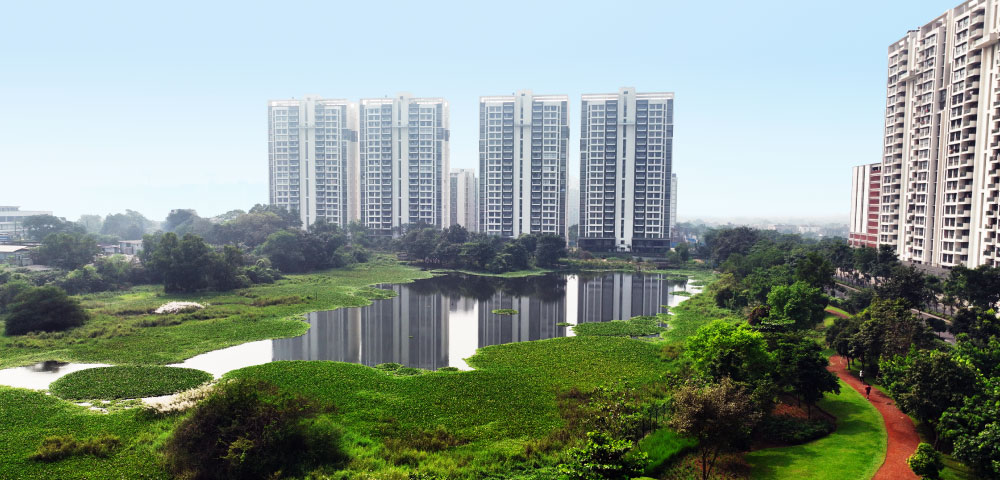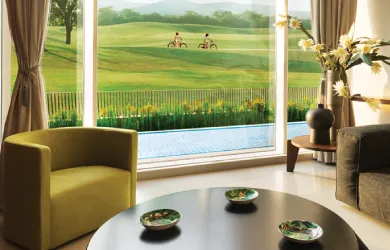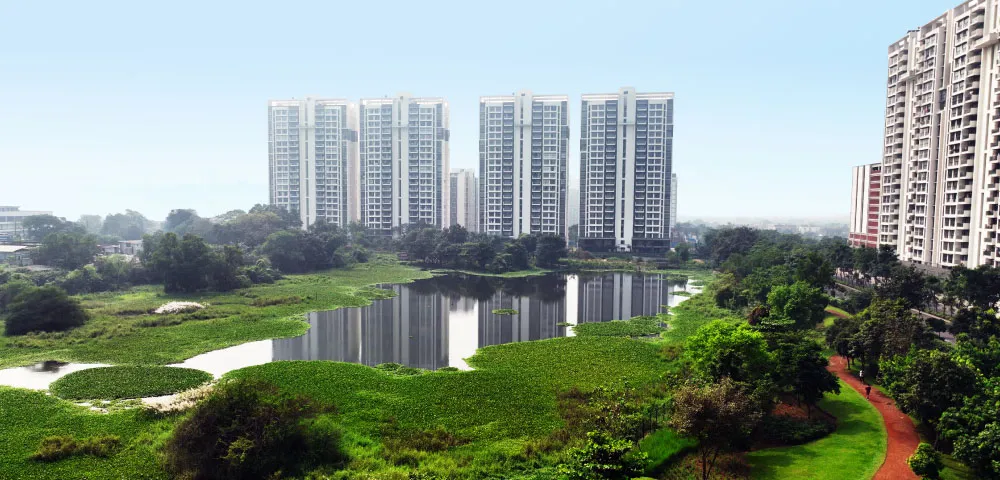One with Nature: Nature-Based Solutions to Man-Made Problem
By lodha
November 21, 2025

Across India this year, we have seen scenes of flooded neighbourhoods, collapsed hillsides and heat that makes daily life unbearable. These are no longer exceptional events. They are reminders that our cities and towns were never designed to handle the new extremes of climate. Rain now arrives in short and intense bursts, overwhelming drains and streams, while rising temperatures are amplified by the way we build and pave our environments.
It is easy to describe these as natural disasters, but much of the damage is the result of how we have built our surroundings. As concrete spreads over land that once absorbed water, runoff accelerates and overwhelms whatever channels exist. Drains and rivers that once had the capacity to carry flows are now too narrow or obstructed. Worse, they were designed with rainfall data from the past, which is no longer a guide to the future. When a city expands without considering the full hierarchy of pluvial flooding on the surface, fluvial flooding in rivers, tidal influences at the coast and even the long term rise in sea levels, it sets itself up for failure.
Heat shows us a similar pattern. Our cities absorb the sun in their dense surfaces and release it back slowly, keeping nights warm and days hotter. Tree cover that once offered shade and cooling has been lost, and water bodies that moderated temperatures have been filled or neglected. Even the orientation of buildings contributes, as narrow canyons between towers trap heat and block airflow. Together these choices create the urban heat islands that we all experience, where the air is hotter, the energy use is higher and the discomfort is constant.
The lesson is clear. We cannot continue to think of concrete drains and mechanical cooling as sufficient responses. The time has come to rediscover how nature itself manages water and heat, and to bring those lessons into the heart of urban design. Nature based solutions are not add ons but fundamental elements of resilience.
Palava, in coastal Maharashtra, offers a useful illustration. From the beginning, its design considered water as an asset rather than a threat. Lakes were preserved and connected into a system that receives, stores and gradually uses rainwater. Open spaces and tree cover are integrated into every neighbourhood, reducing surface runoff and lowering local temperatures. The principle of walkability means that streets are shaded, breezes can flow and surfaces are more permeable. These measures are not ornamental. They form a network that works with natural processes to reduce flooding and to cool the city.
Nature based solutions also bring many co benefits. Wetlands and water bodies improve biodiversity and support recreation. Trees and green corridors add to the quality of life. Permeable pavements and rain gardens recharge groundwater while reducing the burden on drains. In coastal areas, mangroves and natural buffers can protect settlements better than hard barriers alone. The value of these measures lies in how they combine to create places that are safer, healthier and more liveable.
The challenge is not in knowing what to do but in applying it consistently. Land in cities is scarce and there are always competing priorities. Departments often work in parallel rather than together. Ecological systems take time to show results, while communities expect quick relief. These are real constraints, but they can be managed through better planning, clear responsibilities and long term thinking.
What is needed is a proactive approach. Development permissions can begin to account for the climate of the future rather than the past. Natural drainage systems, from small streams to large floodplains, can be mapped and respected as part of essential infrastructure. Design codes can encourage permeable surfaces, green roofs and tree cover as part of the urban fabric. Communities can be engaged to maintain local water systems so that they continue to function well. Financing mechanisms can recognise the many benefits of nature based solutions and direct support to where they are most effective.
If our cities are to thrive, they must learn once again to be one with nature. Every choice about what we pave, where we build and how we orient our streets will determine how we face the challenges ahead. The floods and heat we see today are consequences of past choices, but better choices are possible. By aligning with the natural systems that have always shaped our land, India can create places that are both resilient and humane. The question is not whether we can afford to bring nature into our cities, it is whether we can afford not to.
You may also like



 Enquire
Enquire
 Call
Call
 chat
chat
 Search
Search





